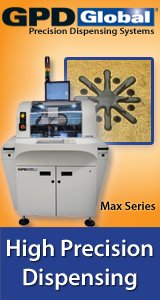Printed Circuit Board Assembly & PCB Design Forum
SMT electronics assembly manufacturing forum.
- SMTnet
- »
- Electronics Forum
- »
- Pin in Paste assistance
Pin in Paste assistance
Views: 5144
![]() Hi,
We are currently working on a board that has 3x 50-pin ...
- Sep 29, 2020
by
kyleh04
Hi,
We are currently working on a board that has 3x 50-pin ...
- Sep 29, 2020
by
kyleh04
![]()
![]()
![]() I would prefer wave for this parts, but if it not an option,...
- Sep 30, 2020
by
Evtimov
I would prefer wave for this parts, but if it not an option,...
- Sep 30, 2020
by
Evtimov
![]()
![]()
![]() > If you could change the design, a 2x25 1.27mm <...
- Sep 30, 2020
by
kyleh04
> If you could change the design, a 2x25 1.27mm <...
- Sep 30, 2020
by
kyleh04
![]()
![]()
![]() Hey Kyle - Good for you for pushing your horizons and consid...
- Dec 03, 2020
by
Groucho
Hey Kyle - Good for you for pushing your horizons and consid...
- Dec 03, 2020
by
Groucho
![]()
![]()
![]() As a side note, you get to clean up all the paste that pukes...
- Dec 04, 2020
by
Sr. Tech
As a side note, you get to clean up all the paste that pukes...
- Dec 04, 2020
by
Sr. Tech
![]()
![]()
![]() You can run it on a carrier board to catch any paste that fa...
- Dec 11, 2020
by
ProcEng1
You can run it on a carrier board to catch any paste that fa...
- Dec 11, 2020
by
ProcEng1
![]()
![]()
![]() Have you tried cutting the leads shorter (or lift the connec...
- Dec 15, 2020
by
Stivais
Have you tried cutting the leads shorter (or lift the connec...
- Dec 15, 2020
by
Stivais
![]()
![]()
![]() for option 3, if you place the connectors on the first pass ...
- Dec 17, 2020
by
DWL
for option 3, if you place the connectors on the first pass ...
- Dec 17, 2020
by
DWL
![]()
![]()
![]() I think over printing is the best option, and I like the ide...
- Dec 17, 2020
by
ProcEng1
I think over printing is the best option, and I like the ide...
- Dec 17, 2020
by
ProcEng1
![]()
![]()
![]() I have found that if you keep lead protrusion below the PCB ...
- Dec 17, 2020
by
Groucho
I have found that if you keep lead protrusion below the PCB ...
- Dec 17, 2020
by
Groucho
![]()
![]()
![]() Hi,
Option 3 is quite often used, while it is better to glue...
- Jan 20, 2021
by
Denys
Hi,
Option 3 is quite often used, while it is better to glue...
- Jan 20, 2021
by
Denys
![]()
- SMTnet
- »
- Electronics Forum
- »
- Pin in Paste assistance







